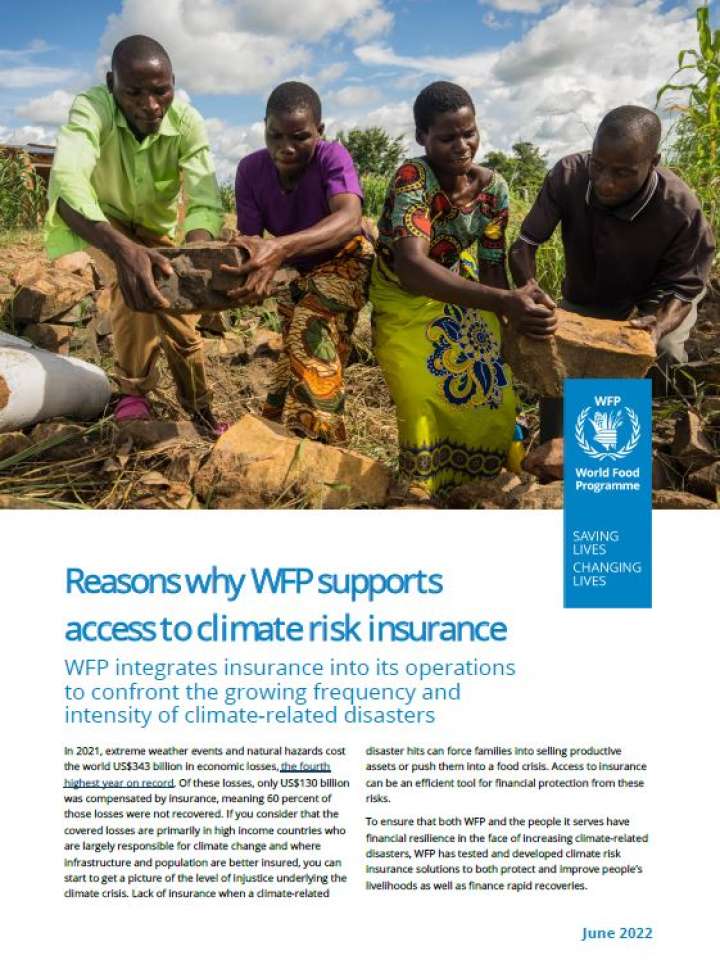Reasons why WFP supports access to climate risk insurance
This brief explains how the World Food Programme has tested and developed climate risk insurance solutions to both protect and improve people's livelihoods as well as finance rapid recoveries. In 2021, extreme weather events and natural hazards cost the world US$343 billion in economic losses, the fourth highest year on record. Of these losses, only US$130 billion was compensated by insurance, meaning 60 percent of those losses were not recovered.
Insurance is a financial tool that compensates people for the financial losses from a specific risk or peril, such as droughts or floods in the case of climate risk insurance, in exchange for paying a small fee called a premium. By pooling premiums across many people with different risk profiles, insurance companies can rapidly bring together a large sum of money when a catastrophic disaster occurs. Payouts that people or institutions receive support in recovery and prevent even worse impacts down the road, and are much higher than the premium cost, creating a multiplier effect that ensures more money is available when it is needed the most.
Explore further
